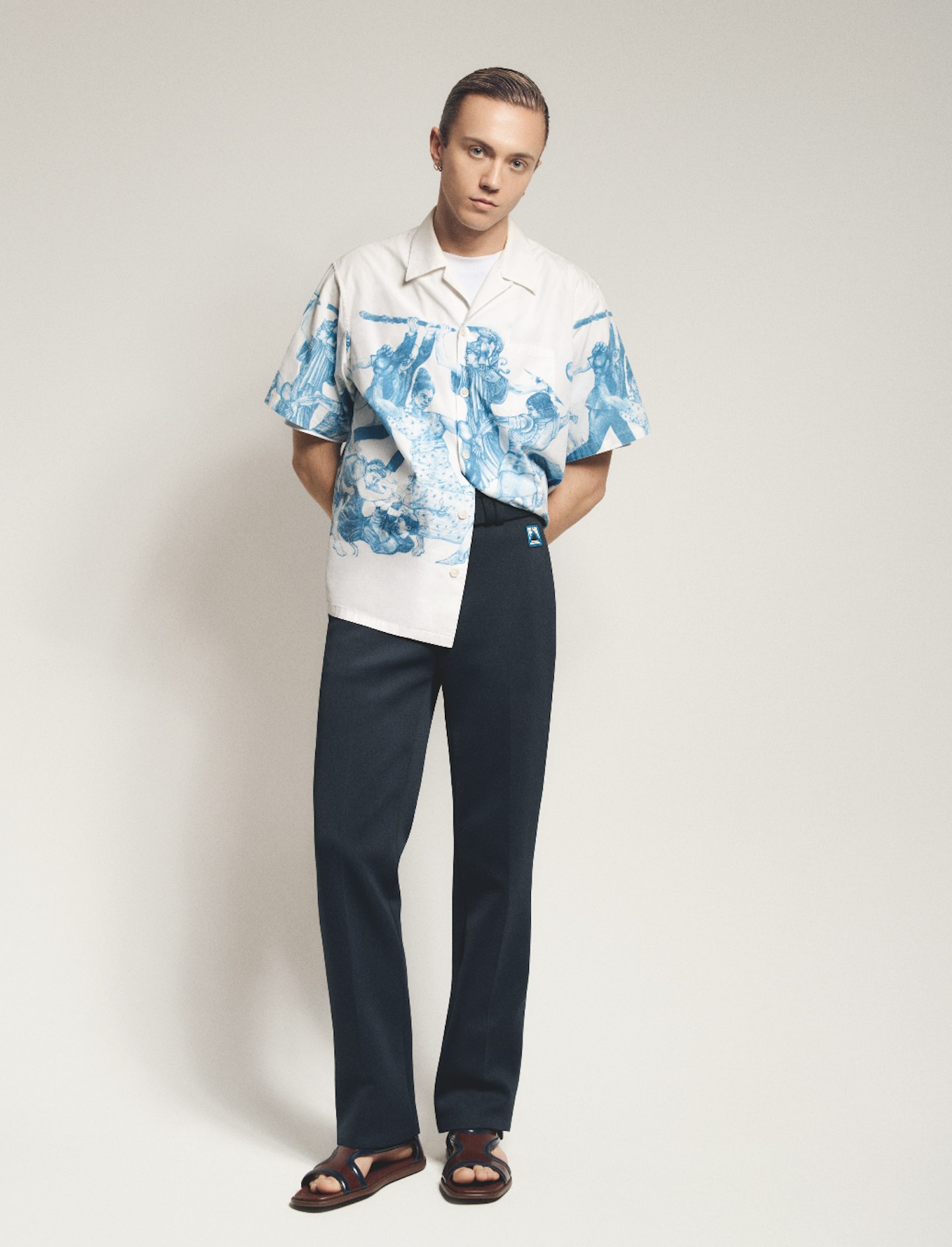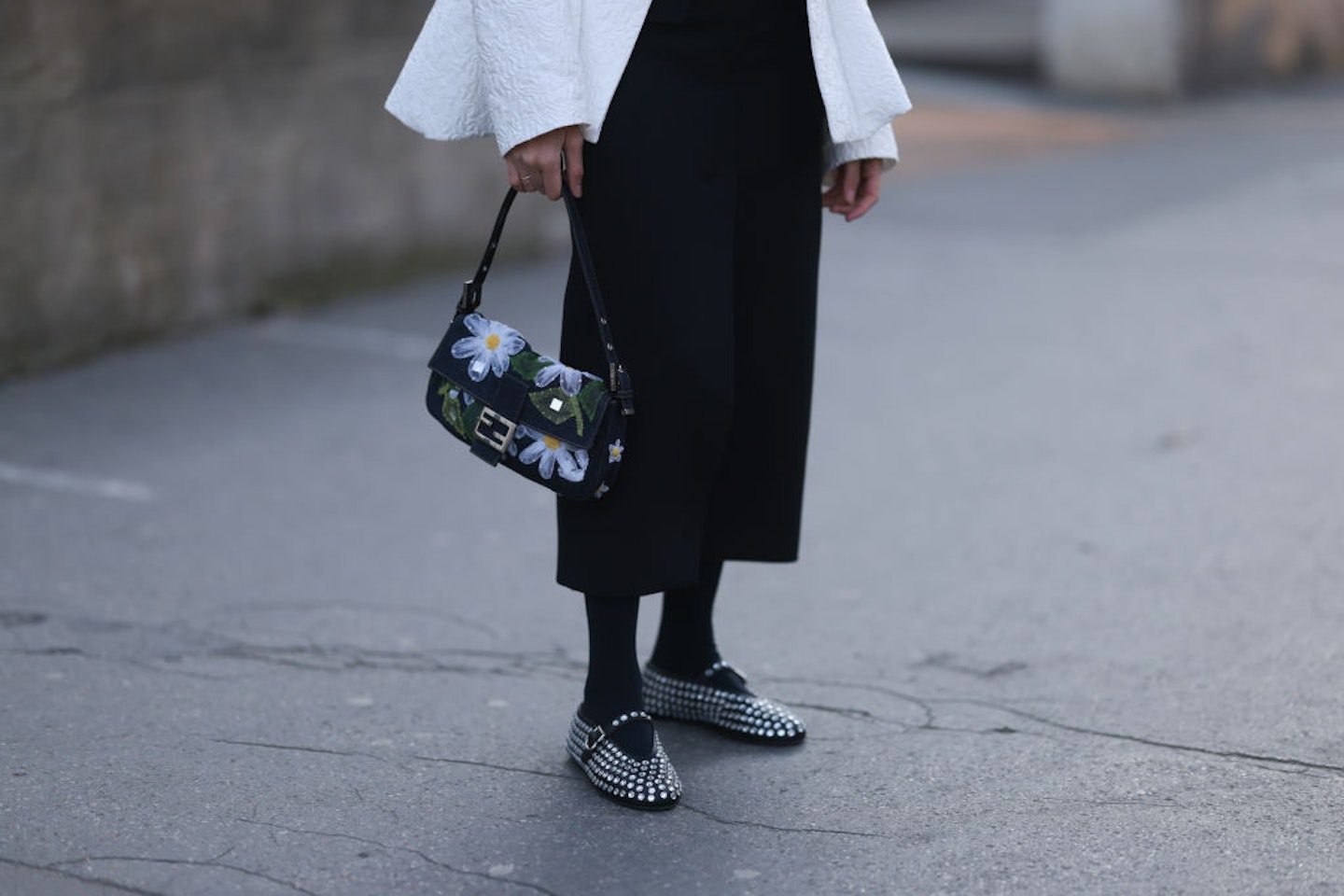I have developed a Vinted obsession. This might sound dramatic, but a breakdown of my iPhone screen time reveals that I have spent more time on the popular resale app than on TikTok. It’s one of life’s great ironies; a fashion editor who loves designer clothes and is addicted to shopping – but doesn’t want to splurge his whole income on new-season wares. It’s a good thing, then, that nothing titillates me more than a secondhand fashion bargain; one man’s trash being another man’s treasure. And, in my case, ‘trash’ comes in the form of Prada. Archival Prada runway pieces, to be precise: belted trousers from the S/S ’19 collection, unworn sandals from S/S ’13 and – the holy grail – an A/W ’16 runway shirt, featuring a print designed by artist Christophe Chemin. In retail numbers, we’d be looking at a total of well over £1,000, but I paid £415 altogether, thanks to Vinted.

I’m not the only one who’s hung up on the Lithuanian app, first launched in 2008 by Milda Mitkute and Justas Janauskas. Between 2021 and 2023, the user numbers grew from 1.2m to more than 16m in Britain alone. In 2023, it was the UK’s third most downloaded app, fuelling the boom of secondhand fashion, greatly driven by a sustainably minded and money-savvy Gen Z. Worldwide, the company lists
more than 105m registered users and operates in 21 countries. And, just last month, Vinted posted a 61% increase in sales, marking the first annual profit for the preloved behemoth (find out here how Vinted works).
I first joined the app in lockdown of 2021. For someone who has always had a healthy appetite for scouring the internet for hard-to-find archive pieces, I was a late bloomer when it came to vintage shopping. Price points were too high, the best product was mostly to be found in Japan or the US, and sizing was an issue. Then I stumbled on a fully-beaded Fendi baguette bagfor £240, complete with its original 2002 Harrods receipt. Such a bargain was utterly unheard of (a similar style would sell for quadruple the price elsewhere). I was sold – as was the bag.

This could have been a fortuitous one-off, but my lucky streak – and diligence – has continued; Vinted is now my go-to for sourcing pieces that have been populating my wish list for years. There are a few tricks for putting together your dream designer wardrobe on a budget. First, vintage shopping is a marathon not a sprint; to be impatient is to run the risk of being disappointed or, even worse, wasting money. It requires zen levels of patience, willpower and endless thumb strength. It will ask you to think strategically, decoding the optimal search terms, and requires putting yourself into the shoes of the seller (before actually, well, putting yourself into their shoes). This might sound militant, especially for those with Sunday evening plans, but perseverance will be rewarded – dopamine rush, with zero consumer guilt, guaranteed. Don’t believe me? Let my £85 Gucciboots convince you otherwise. Alternatively, take my £38 Comme Des Garçons shirt and £40 Givenchy T-shirt as further proof that in a world of spiking prices, buying secondhanddesigner goods can work out even cheaper than shopping on the high street.
How Do I Buy Second-Hand Designer Fashion On Vinted:
Simply follow these steps: 1. Do your research: searching items by precise runway collections (season and year) will deliver more exact results of what it is you’re actually looking for. 2. Can’t find the exact item on your first go? Turn on search alerts. 3. Know your sizes, but don’t be too disheartened if something doesn’t fit, you can always re-list it. 4. Don’t be afraid to haggle, but bargaining for 50p off is never chic (you wouldn’t ask Tesco to discount your packet of Airwaves because you deem 75p too much). 5. Never share your list of favourites and the better it’s curated, the more the algorithm will deliver options you might actually want to buy. 6. My top, secret tip – open your web browser and scroll through the Vinted offering in other countries and let friends or family in the chosen location make the purchase for you. 7. Don’t go nuclear: landing 10 deals in two weeks will set you back as much as a shopping spree on Oxford Street. Set your mind on what it is you really want and don’t get sidetracked along the way.
How To Sell More, According To Vinted Experts
It would be churlish and uneconomical of me not to resell my lesser-worn pieces, too. That’s the beauty of a circular fashion economy, and according to the Vinted team, these are the things to look out for to sell faster and make more money on Vinted.
-
Milda Mitkute, Vinted co-founder
Use more keywords than you think is necessary: This significantly boosts your item’s discoverability. People search using different terms, so the more relevant terms you can use in the listing or item description, the more likely you are to be found. For example, instead of “black T-shirt”, try “plain black, short-sleeve T-shirt with V-neck”. See the difference? Your Vinted account balance will, too! If it has been a few weeks since you’ve listed an item and it hasn’t sold, rewrite the item title and double-check that you have selected all the relevant item filters. This helps to ensure that your item appears in multiple search results.
-
Cecile Wickmann, Senior Director of Luxury
Sell in-season: Listing items when they’re really “in-season” is more likely to result in a quicker sale (and less haggling, so more money) vs listing out-of-season items. People are simply more likely to be shopping for summer clothing in the summer, and winter items in the winter.
-
Emma Sullivan, Creative Director
Make it photo-perfect: The first photo is the most important as it determines whether someone taps on your listing in the first instance to find out more, or not. It’s best to choose a photo that clearly shows the entire item from the front. Also, taking photos of your items in natural light can make all the difference as to whether an item sells or not. Harsh indoor lighting might make do, however, the same item takes a completely different picture under natural light conditions. Photos are best taken against a plain, white or neutral background as it makes your items ‘pop’. With lighter-coloured items, use a darker background to create contrast. Either way, capture multiple angles to provide a multi-dimensional view and take close-ups of details - even the flaws, so buyers know what to expect. The more photos you take (you can upload up to 20), the better informed a buyer will be about choosing your item, and the quicker you’ll be able to sell it.
-
Johanna Eggers, Senior Director of Offline Authentication
Make sure the price is right: Your pricing strategy can significantly influence how quickly and successfully you sell your items. We all have high hopes, but it’s also important to be realistic about what second-hand items can sell for. If you’re not sure where to start, here’s a good rule of thumb: for items that are "New with tags" or "New without tags", a good suggested price is 80%-60% of the retail price, for "Very good" condition, try a suggested price of 60%-40% of the retail price, and for "Good" or "Satisfactory" condition, around 40%-20% of the retail price.
-
Natacha Blanchard, Consumer Lead
Countdown to the weekend: Get into a routine where you can list your items on a weekly basis, particularly in time for the weekend, to maximise your chances of a sale.
-
Marianne Gybels, Sustainability Director of Sustainability
Include “fit” as well as sizing: If your items are officially classed as “tall”, “petite”, “maternity”, “wide-fit”, or similar, make sure you mention it in the listing title and description to make your items easier to find.
If you think luxury shopping has reached its nadir when receiving a pair of Prada trousers wrapped in an Asda bag, I beg to differ. It’s pure luxury: less money spent, little eco-guilt, and the feeling of achievement for having scored a treasure that no one else is wearing. Trust me, nothing feels more rewarding than knowing you really have put in the work to find your perfect summer holiday outfit...
Henrik Lischke is the Senior Fashion Features Editor at Grazia. Prior to that, he held the role of commerce writer at British Vogue, and was junior fashion editor at The Sunday Times Style. A first-class honours Fashion Journalism graduate from UAL: London College of fashion, Henrik is invariably on the lookout for the newest talent in fashion, that is driving the industry forward, and shining the spotlight on them whenever possible. He’s also got a passion for interiors design and the arts. Follow Henrik on Instagram @henriklischke.
